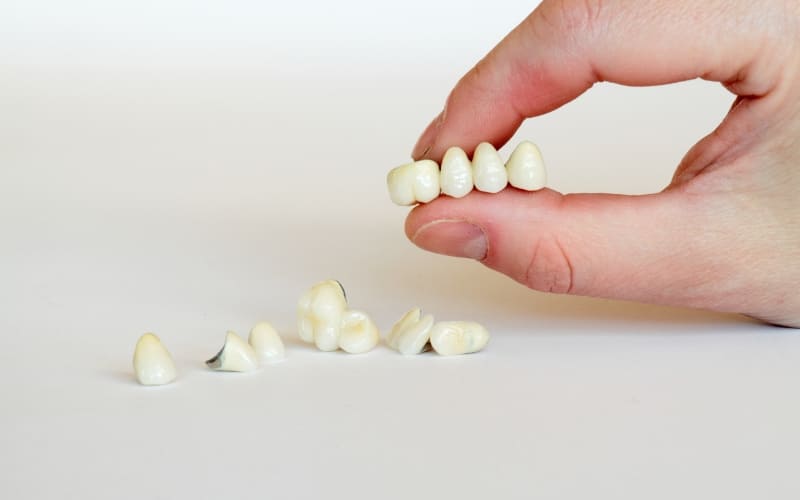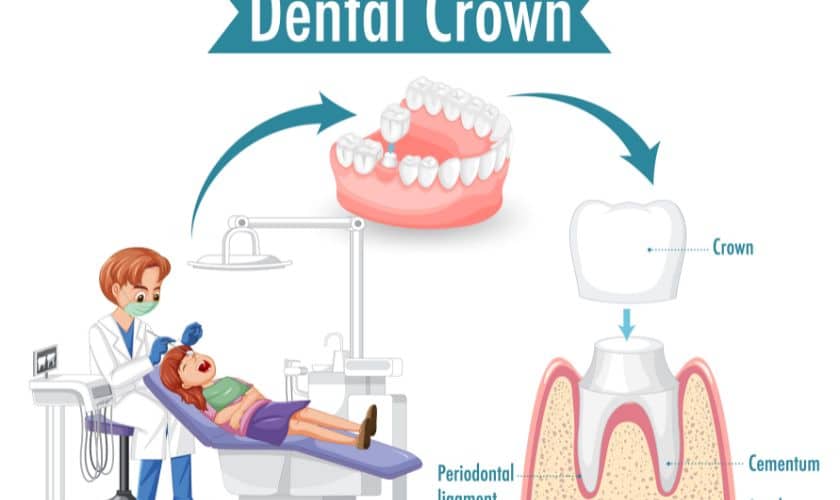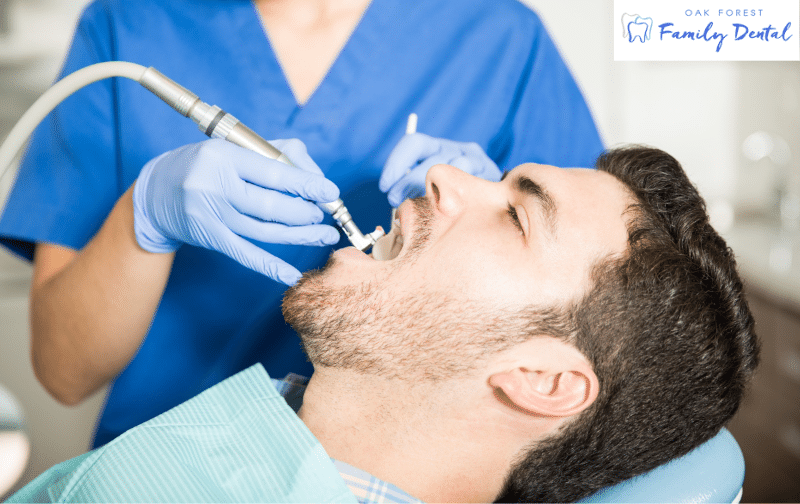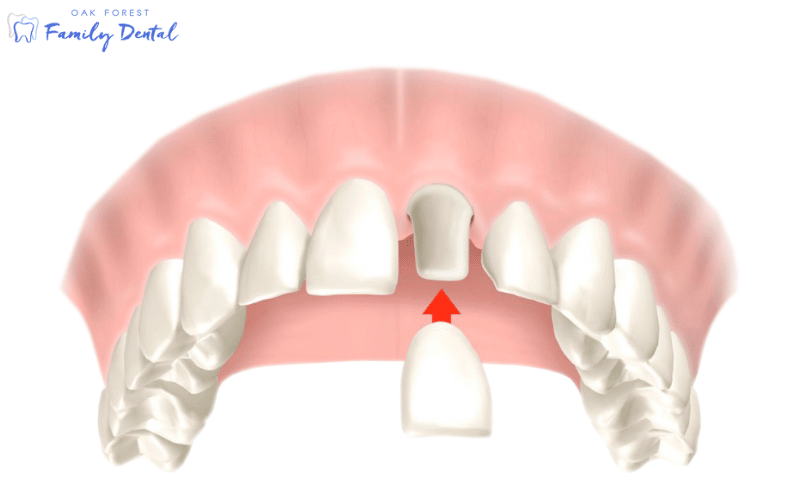Introduction
Bridges and crowns made of dental material are crucial parts of restorative dentistry. These treatments play a crucial role in restoring the aesthetics and functionality of damaged or missing teeth. Understanding the longevity of crowns and bridges is paramount for individuals seeking solutions to damaged or missing teeth.
This article delves into dental crowns and bridges, exploring what they are, the factors affecting their lifespan, and how to ensure their durability. We’ll also discuss the expected lifespan of these vital devices and offer tips for prolonging their life, all while keeping Advanced Solutions Family Dental in mind.
What Are Dental Crowns?
Dental crowns, often called tooth caps, are custom-made prosthetics to cover a damaged or weakened tooth. They are a protective shell, enhancing the tooth’s strength and appearance. Generally, crowns are made of metal, porcelain, or both, depending on the patient’s requirements.
Crowns are commonly used for various purposes, including:
1. Restoration of Broken Teeth:
Crowns can effectively repair teeth that have sustained significant damage due to injury or decay.
2. Protection of Weak Teeth:
Teeth weakened by root canal therapy or large fillings can be strengthened and safeguarded with crowns.
3. Cosmetic Enhancements:
Teeth that are misaligned, discolored, or malformed might all seem better with crowns.
What Are Dental Bridges?
Dental bridges, on the other hand, are restorative devices used to replace one or more missing teeth. A bridge consists of artificial teeth (pontics) anchored in place by crowns on the adjacent natural teeth.
These crowns, known as abutments, support the pontics and bridge the gap created by the missing teeth.
Bridges can be classified into various types, depending on their design:
1. Traditional Bridges:
These are the most common type of bridges, consisting of one or more pontics anchored by dental crowns on either side.
2. Cantilever Bridges:
This type of bridge has a single crown on one side of the pontic and is suitable when only one adjacent tooth is available for support.
3. Maryland Bridges:
Maryland bridges use a metal or porcelain framework with wings on each pontic side bonded to the adjacent teeth, eliminating the need for full crowns.
Factors Affecting the Lifespan of Crowns and Bridges
Dental crowns and bridges’ lifetime and durability are influenced by a number of variables, such as:
1. Materials Used:
The choice of materials significantly impacts the lifespan of crowns and bridges. All-porcelain crowns may be more prone to chipping even though they are aesthetically pleasing. In contrast, porcelain and metal crowns are often quite durable.
2. Oral Hygiene:
Maintaining good oral hygiene is crucial for the longevity of crowns and bridges. Neglecting proper dental care, such as regular brushing and flossing, can lead to gum disease and decay, which may compromise the supporting teeth and the prosthetics.
3. Diet and Lifestyle:
A diet high in sugary and acidic foods can contribute to tooth decay and affect the lifespan of crowns and bridges. Additionally, habits such as teeth grinding (bruxism) can place undue stress on the prosthetics and supporting teeth, potentially leading to premature failure.
4. Quality of Workmanship:
The skill and precision of the dentist and dental technician play a significant role in the longevity of crowns and bridges. Well-fitted restorations are less likely to develop issues over time.
5. Natural Tooth Support:
The condition of the natural teeth that serve as abutments for bridges and supporting teeth for crowns is critical. If these teeth are compromised by decay or gum disease, it can affect the stability of the prosthetics.
Expected Lifespan of Crowns and Bridges
The expected lifespan of dental crowns and bridges varies depending on the above-mentioned factors. On average, crowns and bridges can last 5 to 15 years or even longer. With proper care and maintenance, it’s possible to extend their lifespan to the upper end of this range.
Porcelain-fused-to-metal crowns are known for their durability and longevity, often lasting 10 to 15 years or more. While aesthetically pleasing, all-porcelain crowns may have a slightly shorter lifespan due to their susceptibility to chipping.
Dental bridges, too, can have a similar lifespan. The longevity of a bridge largely depends on the health of the supporting teeth and the quality of the dental work. A well-crafted and well-maintained bridge can last a decade or more.
Prolonging the Life of Crowns and Bridges
To maximize the lifespan of your crowns and bridges, consider the following tips:
1. Excellent Oral Hygiene:
Brush your teeth at least twice daily and floss daily to prevent gum disease and decay. Additionally crucial are routine dental cleanings and examinations.
2. Dietary Considerations:
Limit the amount of sugary and acidic foods and beverages you consume. These can lead to decay and weaken the teeth supporting your crowns and bridges.
3. Use a Night Guard:
If you grind your teeth at night, consider using a night guard to protect your prosthetics from excessive wear and damage.
4. Avoid Bad Habits:
Refrain from using your teeth as tools to open packages or bite on hard objects, which can lead to chipping or fractures in the crowns.
5. Regular Dental Check-ups:
Visit your dentist for routine check-ups and address any issues promptly. Early detection and treatment of problems can prevent the need for extensive repairs or replacements.
6. Maintain Supporting Teeth:
Keep your natural teeth healthy by promptly addressing decay, gum disease, or other dental issues.
7. Professional Cleaning:
Professional cleanings help prevent the buildup of plaque and tartar, which can affect the longevity of crowns and bridges.
Wrap Up!
In conclusion, dental crowns and bridges are valuable solutions for individuals with damaged or missing teeth, offering functional and aesthetic benefits. The lifespan of these vital devices depends on various factors, including the choice of materials, oral hygiene, diet, lifestyle, and the quality of dental work. On average, crowns and bridges can last 5 to 15 years with proper care and maintenance.
To ensure the longevity of your crowns and bridges, it is crucial to maintain excellent oral hygiene, monitor your diet, and avoid damaging habits. Regular dental check-ups and professional cleanings are also essential for early detection and treatment of any issues that may arise. By following these guidelines, you can enjoy the benefits of your crowns and bridges for many years.
Advanced Solutions Family Dental is a trusted name if you’re considering dental crowns and bridges or need restorative dental care. Their experienced team of professionals can guide you through the process, providing high-quality dental care to ensure your restorations last as long as possible. Your smile is an investment; it can remain vibrant and functional for years with the right care.




